How to Make Meatloaf: Thermal Considerations
In the pantheon of iconic restaurant dishes there is a quiet, humble spot in the back corner that is reserved for the great blue plates of the American Diner. And in the center of that shrine, there glows one of the greats of that collection: meatloaf.
Whether served fresh, maybe with mashed potatoes and some nice rich gravy, or reheated the next day on a sandwich, meatloaf is hearty, comforting treat. Of course you don’t want a greasy loaf, and you don’t want one that is dry and chalky. Read on for the thermal tips for a classic, moist, meaty, simply amazing meatloaf.
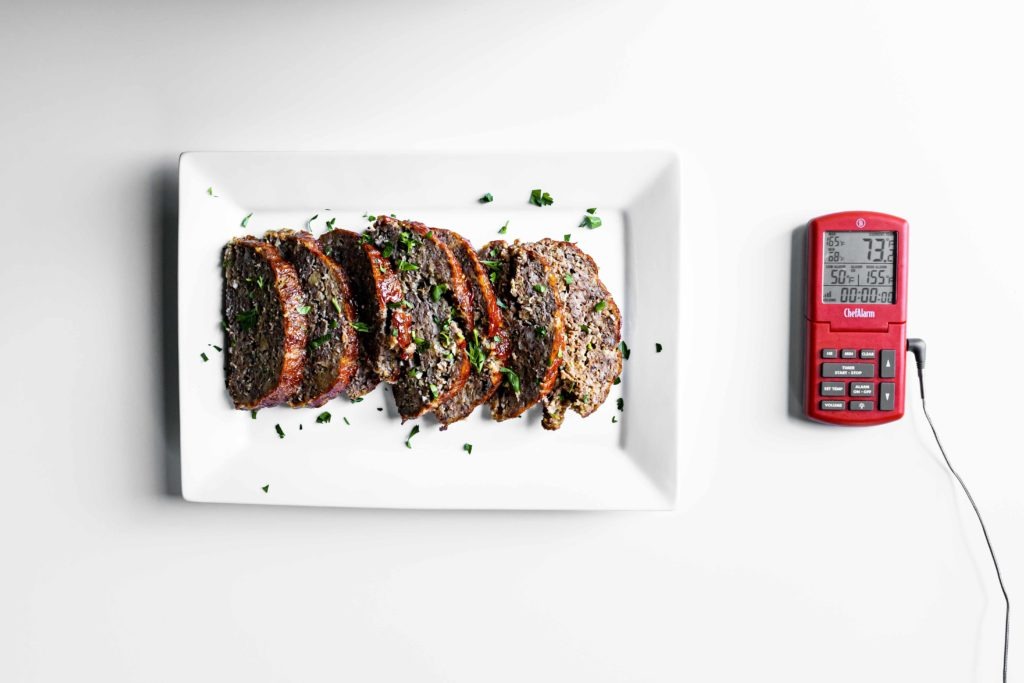
What makes a good meatloaf?
Meatloaf needs a few things to be its best self.
- Meatloaf should be moist, not dry. But it should also not be soggy and greasy.
- Meatloaf should be flavorful, not bland.
- Meatloaf should hold together in slices, not be so crumbly that it can’t be served easily or used in a sandwich.
- Meatloaf should not be too dense. It should be light enough to enjoy and maybe have seconds!
- Meatloaf should have a delicious crusty outside.
Let’s look at these points individually to see what se can do to make the best meatloaf.
Moist (not soggy, not dry) meatloaf
To get a meatloaf that is moist (not dry) we need two things: binders and temperature control.
When making meatloaf or meatballs, it’s standard practice to add some kind of breadcrumb/cracker meal/soaked bread as well as eggs and, often, milk. The milk and eggs are obviously wet ingredients and will help to keep things moist, but beyond their native wetness, they are also full of protein. When the proteins in the milk and eggs cook, they form a network that can help to retain moisture in the loaf.
Meanwhile, the bread-like ingredients create a sponge inside the meatloaf that will retain moisture. The crumbs soak up not only the moisture from the eggs and milk, but also from the meat as it cooks and expels its own water. The breadcrumbs soak it up so that the loaf doesn’t dry out.
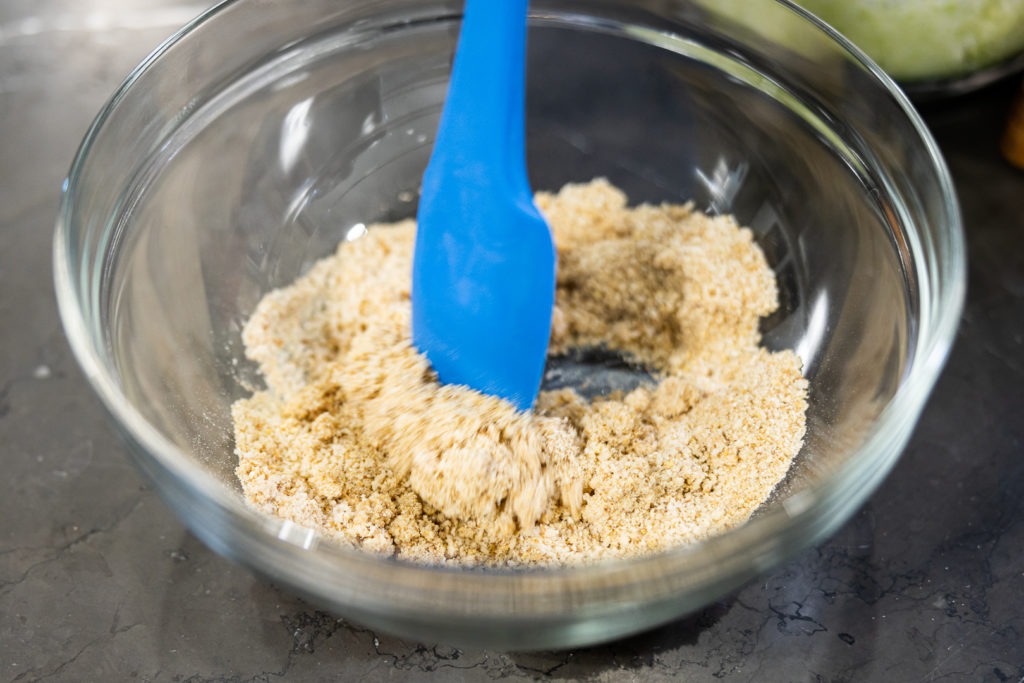
So much for the binders, but they are only half the battle. No meatloaf, no matter how well bound or how much milk you add, can withstand overcooking. Because it is made of ground meat, we must cook all meatloaf to 160°F (71°C). But because we don’t want to dry it out, we don’t want to go beyond that temperature at all, if we can help it. Using a leave-in probe thermometer like the ChefAlarm® to monitor the temperature while cooking can help guarantee success. Because meatloaf is cooked in a moderately-hot oven—350°F (171°C)— there will be some carryover cooking, so pull it from heat at 155°F (68°C). That critical temperature will give you a meatloaf that is both safe and as juicy as possible.
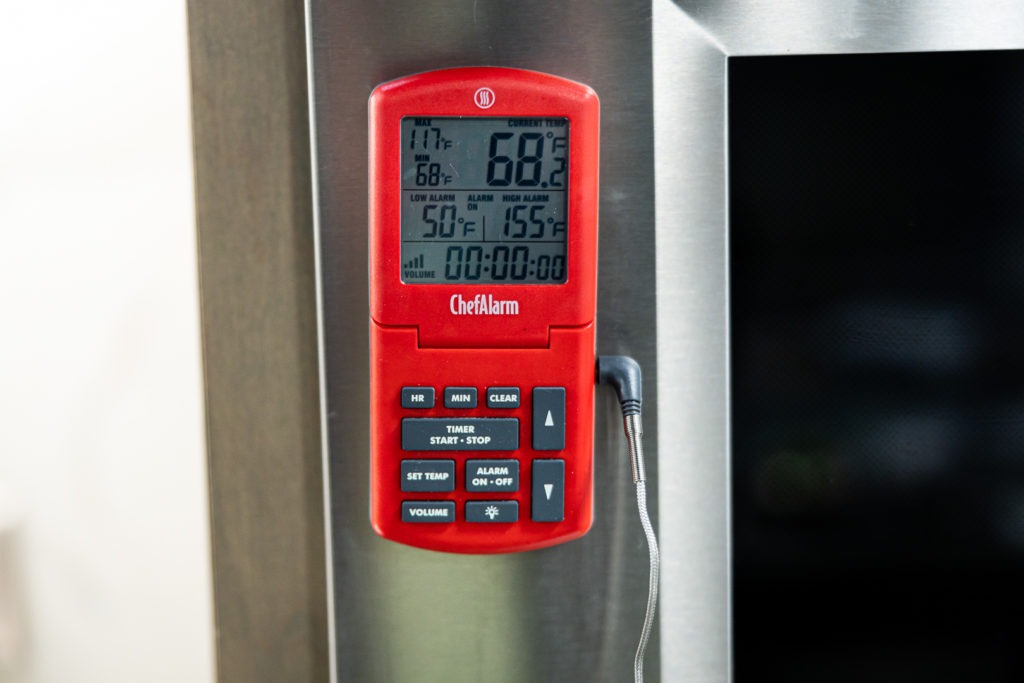
(It can also be helpful to add a proportion of ground pork to the meatloaf to make it more moist. Ground pork often comes from collagen-laden cuts and will have ample gelatin to add to the loaf, thus retaining moisture.)
Meatloaf that isn’t soggy
So, yes, we want our meatloaf moist, but we don’t want it grease-laden and soggy. If we take a pile of ground beef and pack it into a loaf pan, the fat that renders out has nowhere to go, and so the loaf swims in its own juices…but not in a good way. To solve this problem, make a free-form meatloaf. Shape it into a long mound on a sheet tray lined with parchment or foil, and the excess fat will drain away from the loaf during cooking. If you’ve properly bound and shaped your meatloaf and haven’t overcooked it, it will have the perfect texture without being soggy or dry.
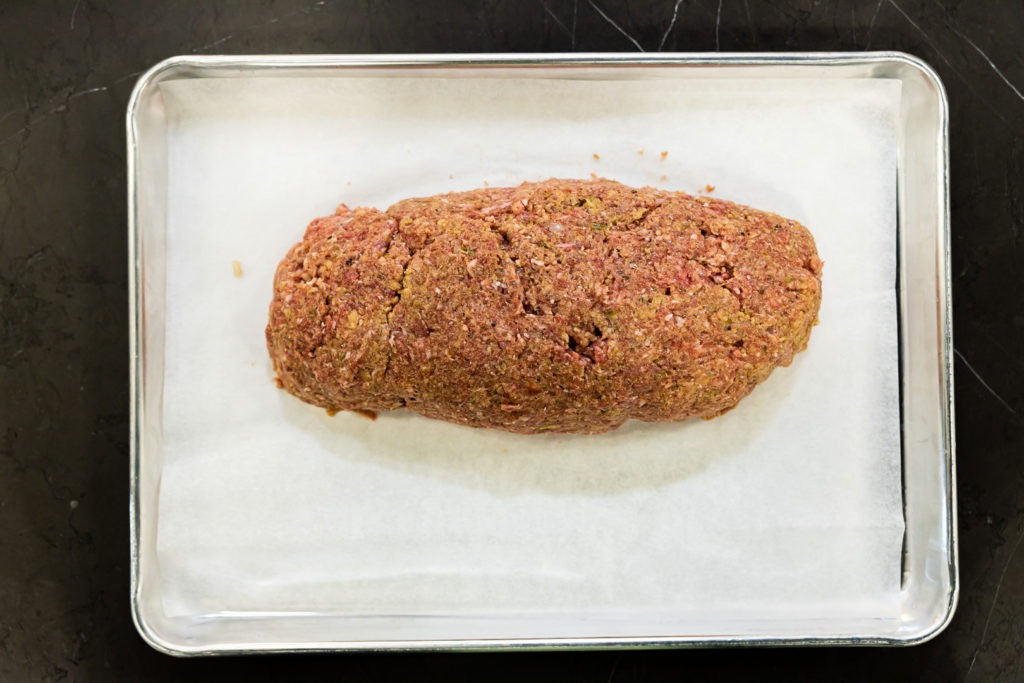
Bonus: this shaping method also aids in slice and crust formation, but we’ll talk more about those below.
Flavorful meatloaf
Do you know what separates the cooking of most great chefs from that of the average home cook? Seasoning. Great cooks season their food well, and so should you!
Of course, you can flavor your meatloaf however you want, but for a classic presentation, it’s best to keep it simple. This recipe uses salt, pepper, onion, celery and garlic for flavor, with a splash of Worcestershire sauce for added depth and richness. The use of the aromatic onion, garlic, and celery gives the meatloaf that “home-cooked” flavor and smell that brings back old memories of Grandma’s cooking.
Onions, garlic and celery do pose one problem though: they don’t cook down easily. Little bits of crunchy onion or celery or potent, hot garlic will spoil the comforting aspect of eating meatloaf. To get around that obstacle, it’s best to finely chop the vegetal ingredients in a food processor (eliminating chunks) and then saute them—thus eliminating overly-potent flavors. No matter the recipe you choose to use, adding the sauté step will absolutely help your final flavor.
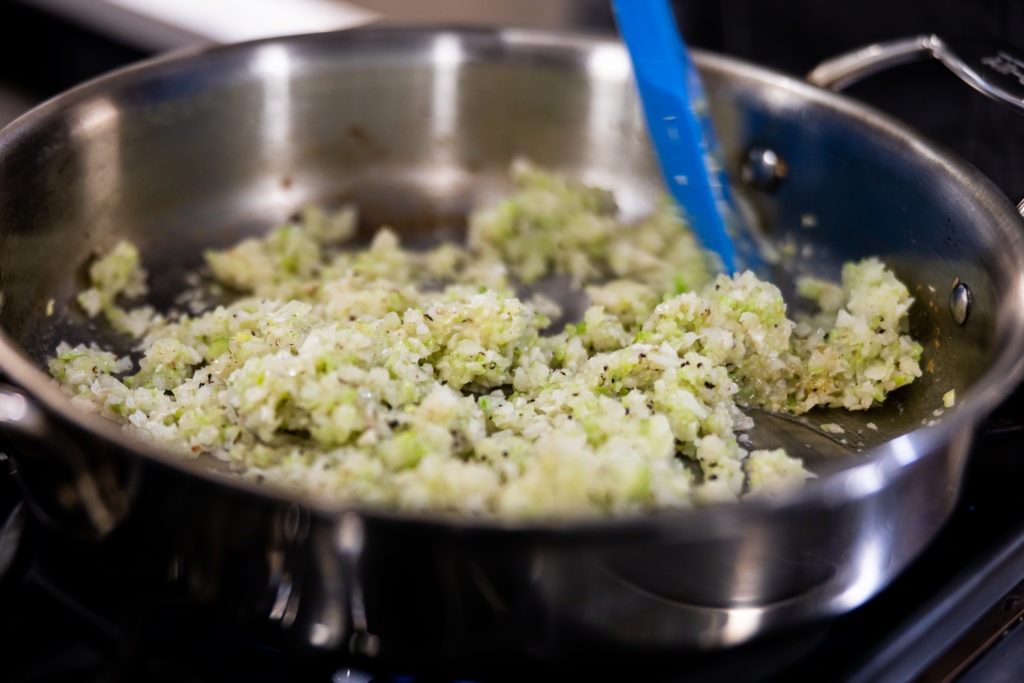
Meatloaf should slice, not crumble, nor should it be too dense
For that diner-worthy blue-plate special presentation, you need to be able to actually slice your meatloaf. It’s critical for both the plate and (leftovers willing) the sandwich bread. Luckily, some of the same things that keep our meatloaf moist also keep it together: binders. The name should make it clear, obviously, but binders like breadcrumbs and eggs cook together to give your meatloaf structure.
There is one more thing that helps to hold a meatloaf together, and that is mixing. Properly mixing a meatloaf prior to forming not only assures an evenness of flavor, but it also facilitates the linking of myosin in the meat, creating more of the protein network that will help to hold the slices together.
However, overmixing can cause meatloaf to become springy, rubbery, and too dense. If that myosin network gets built up too much, it’s bad news for the texture of your loaf. So, don’t mix it too heavily. Pre-mix some of your flavoring and binding ingredients before you add and combine the meat makes for easier, better mixing. It’s best to do all the mixing by hand, just until the meat barely starts to appear slightly fibrous and then stopping. Keep it light and you’ll be rewarded with better final texture.
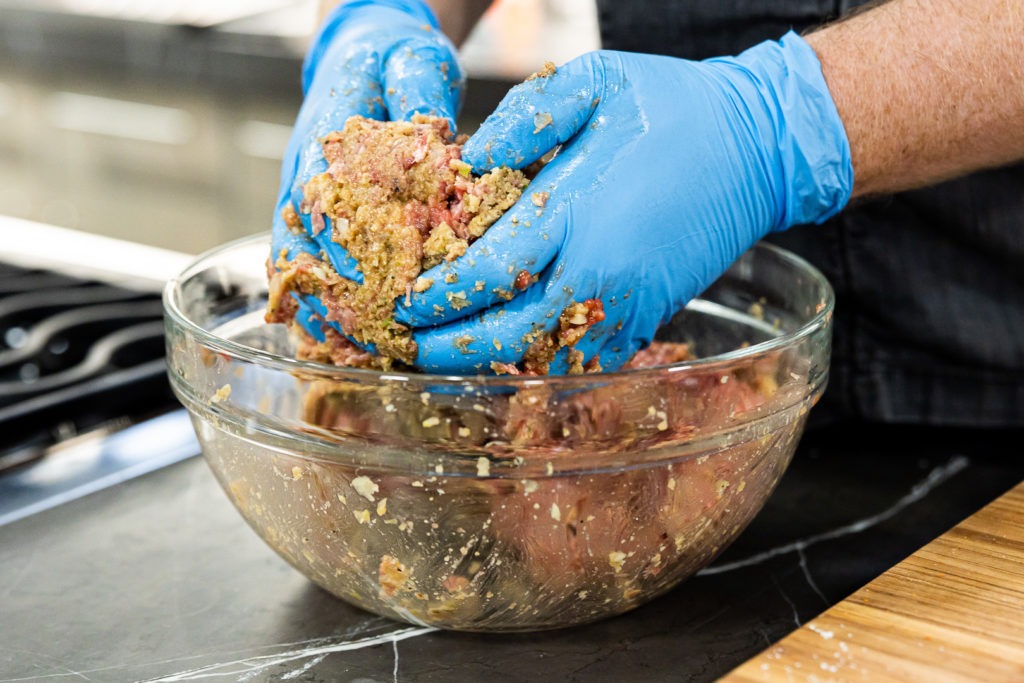
Meatloaf should have a delectable outer crust
The well-cooked outer crust of a piece of meatloaf is one of the best parts. Whether it’s coated in a traditional ketchup glaze or layered with strips of bacon, the outside is where a lot of flavor development happens. By free-forming a meatloaf—not cooking it in a loaf pan—we get maximum surface area exposure, and therefore maximum flavor. So not only does it make it easier to slice and guard against sogginess, but mounding your meatloaf instead of panning it also makes your meatloaf literally tastier. Sounds like a plan to me!
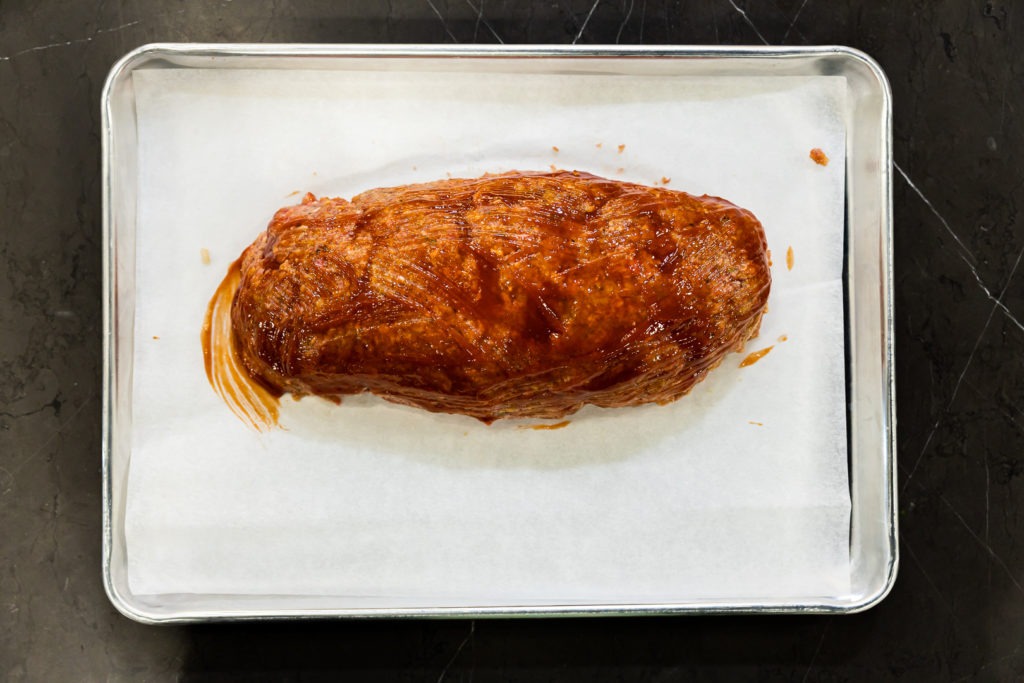
That’s not a little bit of information there, but it’s pretty easy to digest. Use binder for moisture and structure. Free-form your loaf for ease of serving, preventing sogginess, and maximum flavor development. Season your loaf, cooking any vegetal ingredients, and, most importantly, make sure your meatloaf is cooked (after carryover) to a food-safe but not dried-out temperature of 160°F (71°C). Use your thermometer along the way and have comforting, delicious meatloaf tonight.
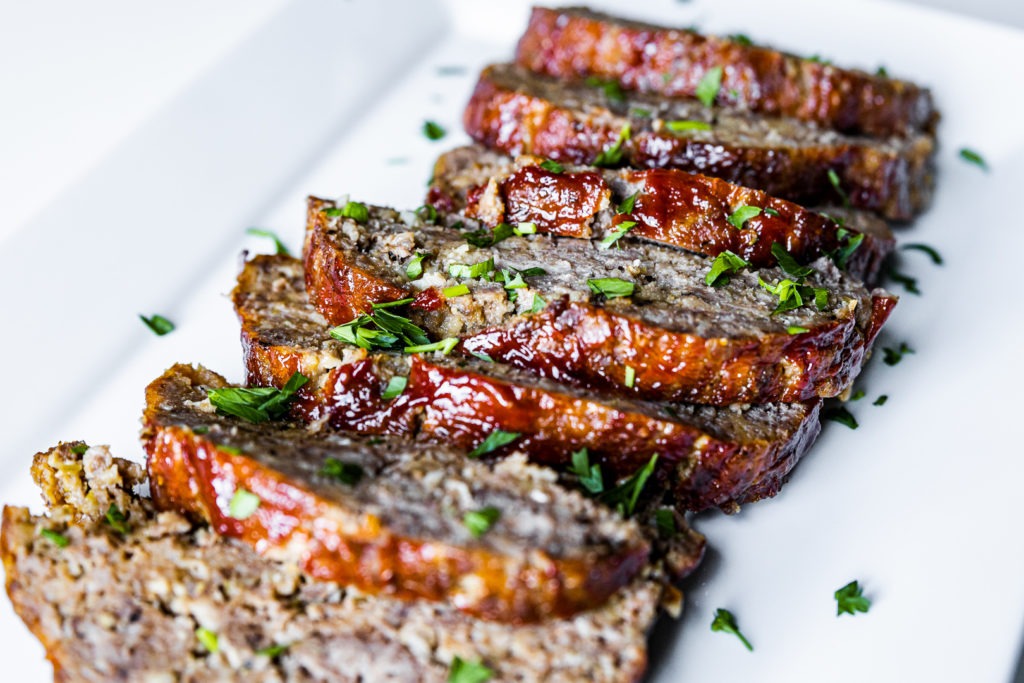
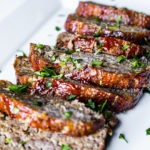
Classic Meatloaf Recipe
- Prep Time: 30 min
- Cook Time: 60 min
- Total Time: 1 hour 30 minutes
- Category: Entree
- Method: Baking
- Cuisine: American
Description
Based on Rhoda Boone’s Our Favorite Meatloaf from Epicurious.com
Ingredients
- 1 C fine breadcrumbs
- 1/3 C milk (whole is best)
- 1 medium onion, coarsely chopped
- 1 celery stalk, coarsely chopped
- 4 garlic cloves
- 2 Tbsp vegetable oil
- 2 1/4 tsp kosher salt, divided
- 1 1/2 tsp freshly ground black pepper, divided
- 3 Tbsp Worcestershire sauce
- 1 1/2 lb ground beef chuck, preferably 20% fat
- 1/2 lb ground pork
- 2 large eggs
- 1/2 C ketchup, divided, plus more for serving
Instructions
- Preheat the oven to 350°F (177°C).
- Mix the breadcrumbs and milk together in the bottom of a large mixing bowl.
- Finely chop the onion, celery, and garlic in a food processor.
- Heat the oil in a skillet over medium-high heat. Add the finely chopped vegetables, 1 tsp of the salt, and 1/2 tsp of the pepper. Sauté until they soften and just start to gather some brown and gold on their edges.
- Take the pan from heat. Add the cooked veggies and Worcestershire sauce to the breadcrumb/milk mixture. Stir to combine.
- To the veggie/breadcrumb mixture, add the beef, pork, remaining salt, 1/4 C of the ketchup, 1 tsp of pepper, and the eggs. Combine with your hands, mixing gently but thoroughly. If the mixture starts to appear somewhat fibrous, stop mixing.
- Line a sheet pan with parchment paper and form the meat mixture into a long loaf, about 5 inches wide.
- Brush the rest of the ketchup onto the outside of the loaf, coating evenly.
- Insert the probe from a ChefAlarm into the center of the loaf and set the high-temp alarm for 155°F (68°C).
- Bake the meatloaf until the high-temp alarm sounds, about 1 hour.
- When the alarm sounds, verify the temperature with an instant-read thermometer like the Thermapen Mk4.
- Allow the meatloaf to rest on the counter for 15 minutes. Use the max-temp function of the ChefAlarm to be sure that the meat reaches 160°F (71°C) during the rest.
- Slice the meatloaf and serve it up!
An oven isn’t the only way to cook a meatloaf! We also have instructions for a great smoked meatloaf recipe.
Shop now for products used in this post:


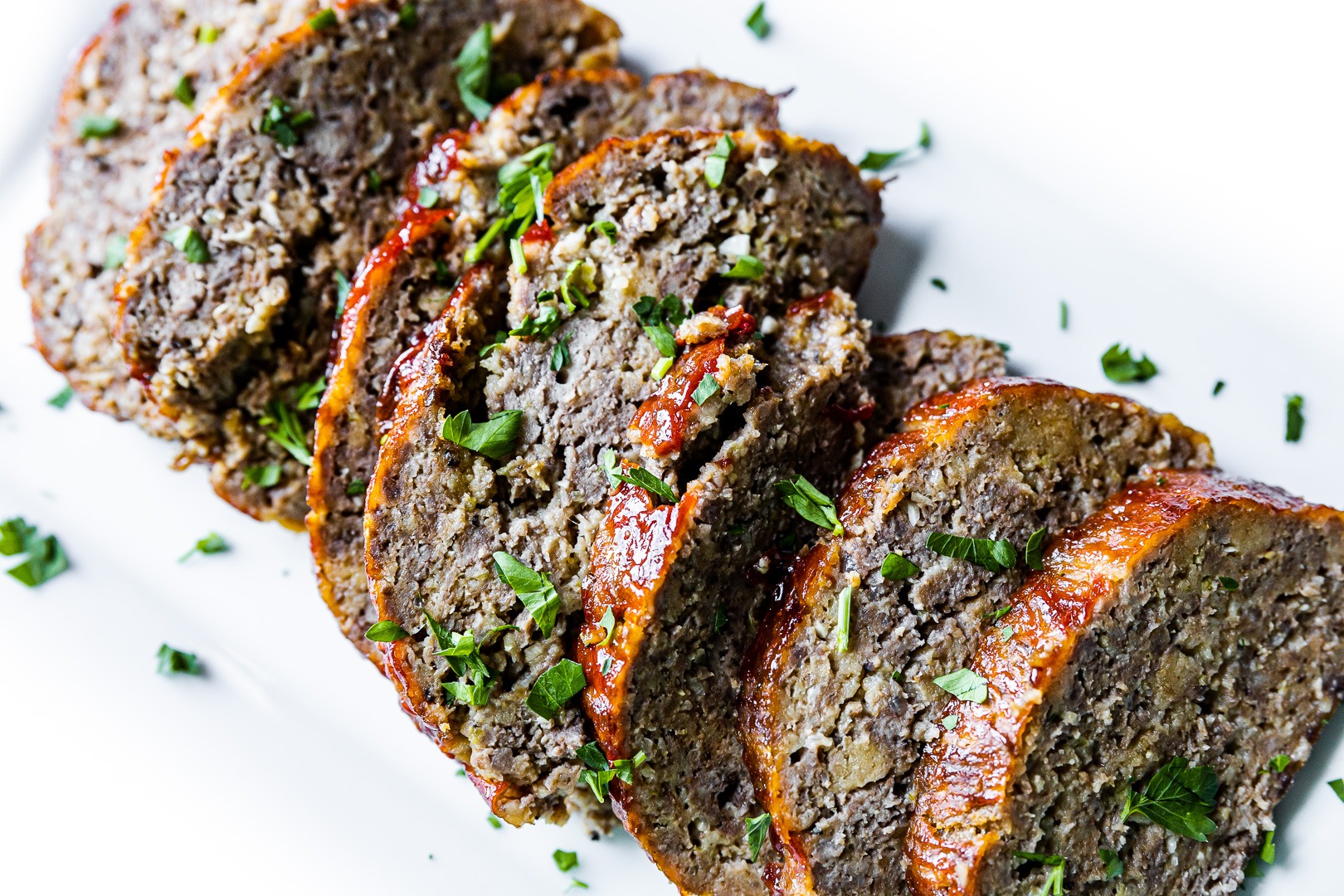
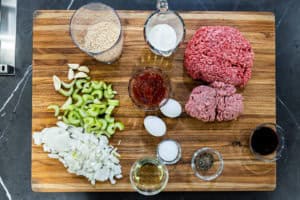
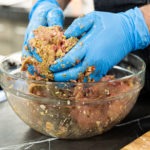
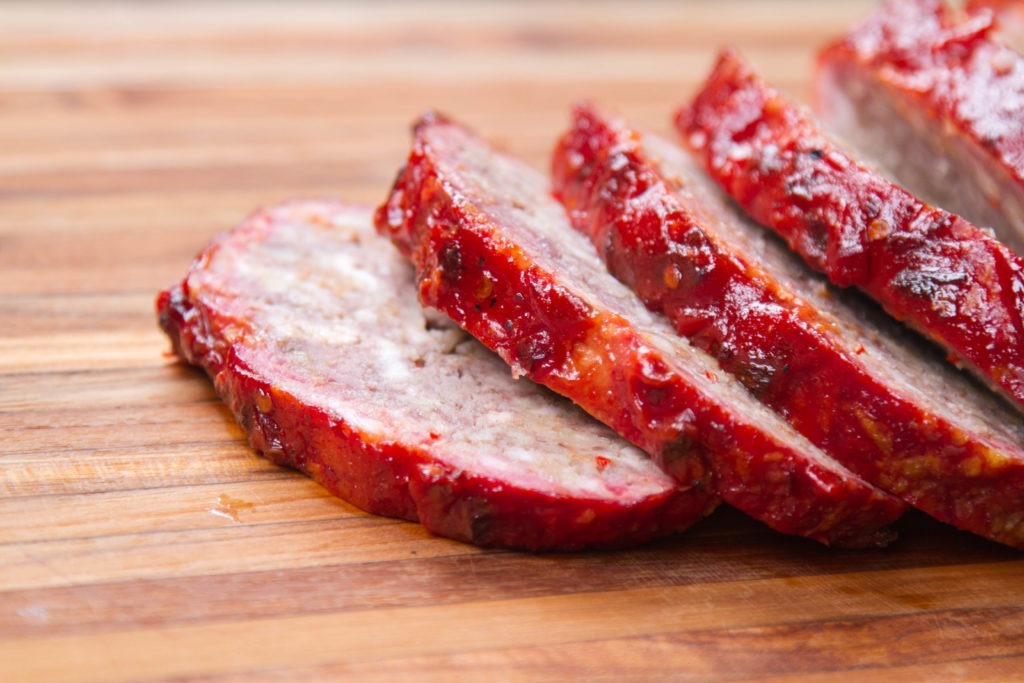

Do you have any recommendations for meatloaf using other meats like Turkey or chicken? Can they simply be substituted? Great article!
Thanks, JOE
Joe,
Yes, they can be. But if you’re cooking fowl, increase your pull temp to 160°F.
Now I know why I never cared for meatloaf — it was the way I prepared it. Thank-you for the in-depth instructions.
A few years ago, you printed a meat loaf recipe that substituted minced toasted onion and onion powder for fresh onions. It is quick and easy to prepare, and since it does not call for milk or pork, can meet requirements of a kosher kitchen.
It is a favorite.
A Penzey’s meatloaf recipe using their spices.
My mistake, sorry…the meatloaf recipe I referred to in my recent post was from Penzey’s and was a customer provided recipe.
My wife is allergic to wheat and corn, so we add rice. Any suggestions on how the rice should be pre-pared would be helpful: raw, partially cooked, regular cooking, etc. thanks in advance for any suggestions.
Ken,
Precooking the rice is the way to go. Even better, cook it, cool it, then reheat it with the milk. This may seem odd, but the milk is adding protein, and you don’t want to skip out on that. reheating the rice with the milk will help the rice absorb it to some degree. As for other non-wheat/corn ingredients, try some instant or quick-cooking oats. I”m not sure if precooking those would be better or not, I’d try it without cooking first. Good luck and let me know how it goes!
I would love to see a low carb version of meatloaf. I have been eating the ketogenic diet way, for almost 2 years. Could crumbled up pork rinds, or shredded zucchini act as a substitute for bread or cracker crumbs? I know they have no gluten, but they might kinda sort of, maybe work?
If you’re shooting for very-low carb, I might try adding shredded cabbage, actually. Shred it yourself into very long strands, sauté it with the minced onion, and then mix it in. The long strand s could help to hold it together. Also, “overmixing” it will help keep it together without the bready binder. I’d love to hear how it goes if you try it!
The recipe, method, and cooking temperatures are OK; I have cooked meatloaf often with slight, personal variations. I roast the meatloaf in a loaf pan, but I put the meatloaf
on a formed tray with holes on its bottom surface to hold the loaf off of the bottom of the loaf pan. This insures that the meatloaf will be roasted and not poached in its own juices. I think that when roasted “free-form” on a flat roasting pan, raising the loaf off the pan with some kind of rack will give a nice roast without a soggy bottom surface. By the way, I use your temp sensor inserted longitudinally in the meatloaf and it works great!
Best regards,
Mike Boyajian
Mike,
That drip-tray method is ingenious!Keep up the good work and happy cooking!
I remember having meatloaf growing up and never liking it. We now use a recipe from Giada De Laurentiis that uses Turkey and Pancetta but still uses ketchup. Ketchup from supermarkets has excessive sugar i.e. corn syrup. Home made is better and more healthy but had a short shelf life. Next time we will try home made. I have the MK4 which always works plus a Bluetooth unit which was a gift. What is the target temp using ground Turkey? Kevin
Kevin,
For ground turkey, pull at 160°F. The pancetta in there sounds delicious!
Meatloaf does not have to be cooked in a 350 degree oven. It can be cooked in a smoker at 250- 300 degrees, using a meatloaf-shaped basket (They are made for that purpose). The result is delicious!
There is no need to sauté vegetables unless they are hard root veggies like carrots or beets. Even those will be fine if you grate them. I have NEVER had celery or onion end up crunchy or unpleasantly textured in a meatloaf. Just make sure you mince any hard ingredients you add. Also, a higher pork (or lamb) to ground beef ratio makes it much more tasty.
That’s why you sauté the onions and celery and whatever crunching vegie you put in the meatloaf FIRST! Meatloaf without onions and celery is just a loaf of meat!
I know what I’m Saying Is like Telling Someone They Need to learn to Recook to Relearn Their Ways Of Cooking BUT Here’s Goes, Most Recipes Tells You To Cook onions,celery,etc.In frying pan BEFORE Adding to the Hamburger (cooled) Then Combine.Its OK,But I Wouldn’t Do It And the reason why?When you cook Your Vegetables In The Pan you Don’t Cook Off The Flavor But Whatever Flavor the onion has the flavor of the onion is in the oil and is trapped inside the pan Not On the Onion and you’re left with a flavorless ingredient.And Now With The Crunchy Meatloaf.No Where Has I seen Any Meatloaf Recipe That tells you to cover up the Meatloaf Before You Bake.But Here’s What I Know What Makes Your Meatloaf Says WOW!! At the Dinner Table.Before You Put Your Finished Meatloaf To the Final.Place a Sheet of Aluminum Foil Over The Entire Plate and Bake for a half hour then remove the Foil from the pan Your Meatloaf will look a bit slight brown and Full of Water But Don’t panic when you finish Baking the remaining half hour the water will reduce your Meatloaf will get a little browning But Most Important It Won’t Dry and will be Soft.This One Step is Good Too IF, Your Oven Doesn’t Bake like It Used to Where The Inside Of Meatloaf Appears Pink Not Brown And You need a New Stove So This Makes Your Food Fully Cooked. Also when All The Spices You Could Throw On Your Meatloaf And Seems Flavorless It Means The Meatloaf Needs Further Cooking (after slicing) By
Mircowave OR In a Frying Pan.